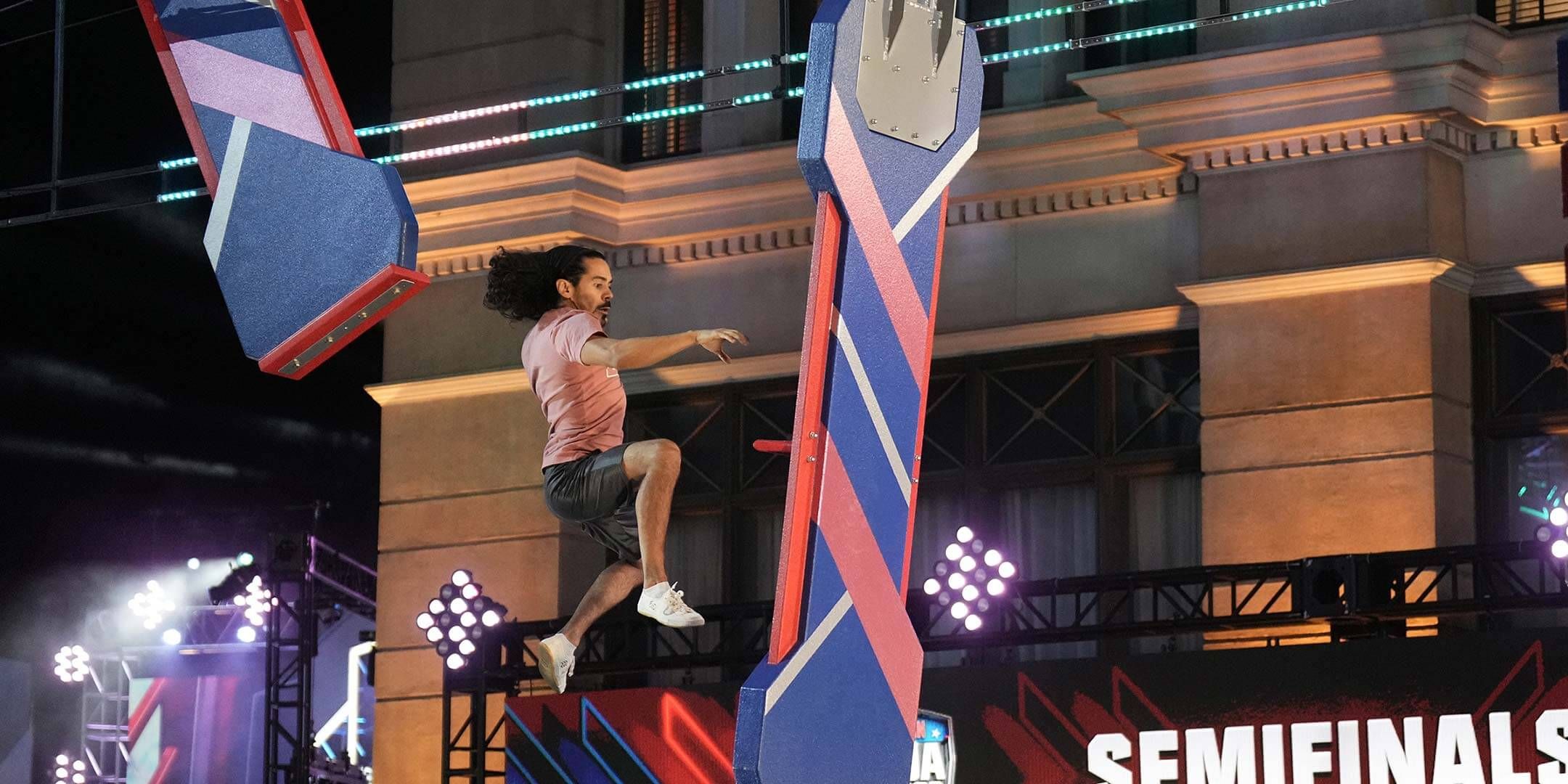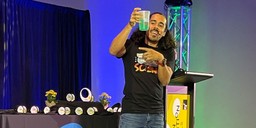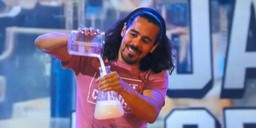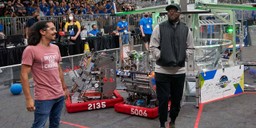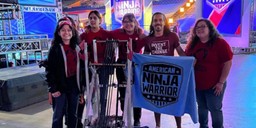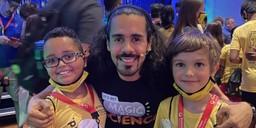In Jay Flores ’12’s world, crayons never break. Grandmas soar through the skies in suits that rival those of Stark Industries. Totaled vehicles beyond repair exit drive-through car washes without so much as a scratch.
Maybe that’s not all true quite yet, but he has his best people on it. Through his company, Invent the Change, Flores is inspiring young minds to reimagine the world and “invent the change” they want to see in it through science, technology, engineering, and math (STEM).
“I have a vision of a world [in which] science is celebrated to the level that other things we celebrate in this country are,” Flores says. “I feel that society gets the best of what it celebrates, and science should be one of those things.”
Credit: Julianne Lindsey
Flores uses himself as a prime example of why the next generation of innovation is best engaged at a young age. Home videos show a three-year-old Jay constructing airplanes out of couch cushions and experimenting with the sounds different spoons made when banged against pots and pans.
“That was my original curiosity and exploration of science,” Flores says. “I just didn't know I was a scientist yet.”
It wasn’t until 13 years later, when Flores was a junior in high school and long after he had committed to what he calls the “easy math path,” that a teacher suggested he might be well-suited to engineering, and he joined a summer engineering program at the UW. Through this experience, Flores was introduced not only to the infinite potential of a STEM education but also to the importance of getting it in front of as many kids as possible, as soon as possible.
After earning his mechanical engineering degree from the UW, where he was a Precollege Enrichment Opportunity Program for Learning Excellence (PEOPLE) scholar and Rockwell Automation scholar, Flores worked in technical sales for Rockwell and partnered with clients from construction companies to Coca-Cola and Chips Ahoy. He quickly recognized the value in these examples of STEM applications in a variety of industries.
“I was the kid in math class that always asked, ‘Why would I ever need to use this in my life?’ ” Flores says. “Now, I had all these cool, real-life examples to share with the kids that are asking that same question that I had.”
Flores began booking speaking engagements, delivered a TEDxYouth talk, and became Rockwell’s global STEM ambassador, working with companies like For Inspiration and Recognition of Science and Technology (FIRSTâ) and helping to host their LEGO League national championships in Brazil and Mexico. This is where he spent the last two weeks before the United States shut down in response to the COVID-19 pandemic. International travel, conventions, and in-school instruction came to a screeching halt. How would kids come to know and love the STEM fields in which Flores had watched so many of them flourish?
Like many questions of the past three years, the answer to this one lay in TikTok. To supplement the absence of hands-on science in the classroom, Flores began filming It’s Not Magic: It’s Science!, a series in which he uses household items to conduct simple but surprising experiments. A champion of STEM equity and accessibility, Flores uses inexpensive, everyday items and films in the familiar setting of his home kitchen.
His first video — an experiment in itself — garnered millions of views. He began offering low-cost kits that contained the materials and instructions to conduct the same experiments at home. Today, he’s taking his show on the road and performing live events that welcome audience volunteers to take part in the “magic” while learning the science behind it.
Credit: Dan Donovan
“[Magic] is inclusive,” Flores says. “Everybody can have their mind blown by magic. But once you learn a magic trick, you don’t keep that to yourself. You share it with others,” Flores says.
Whether he’s been working through an experiment, starting a business, or preparing to swing across a water trap on American Ninja Warrior, Flores has stayed true to the philosophy he hopes to instill in young scientists: “[When] you’re at the edge of your comfort zone, it feels weird, like you haven’t been here before, because you haven’t,” Flores says. “I learned a lot about that as a scientist because you’re trying to do things that haven’t been done before and you’re trying to solve a problem that hasn’t been solved. It’s difficult, but it doesn’t mean you’re bad at it. It might feel like you don’t belong in the space because you haven’t been there yet, but that’s where the good stuff happens.”
Flores is excited about the future: he’s seen glimpses of it in the young minds he works with every day. If this is only the nascence of their innovation, he can’t wait to see the world they’ll help create.
“I recently went to Invention Convention, where we did the first live tour of It’s Not Magic: It’s Science! in Detroit at the Henry Ford Museum,” Flores says. “There was this kindergartner, and her innovation was something that prevented her crayons from breaking or falling on the floor … [and] that’s exactly what I’m trying to show people: that engineering is problem-solving. It doesn’t matter what it is — if it’s curing cancer or preventing your crayons from breaking — there’s a space for you in creating these things and solving problems.”
